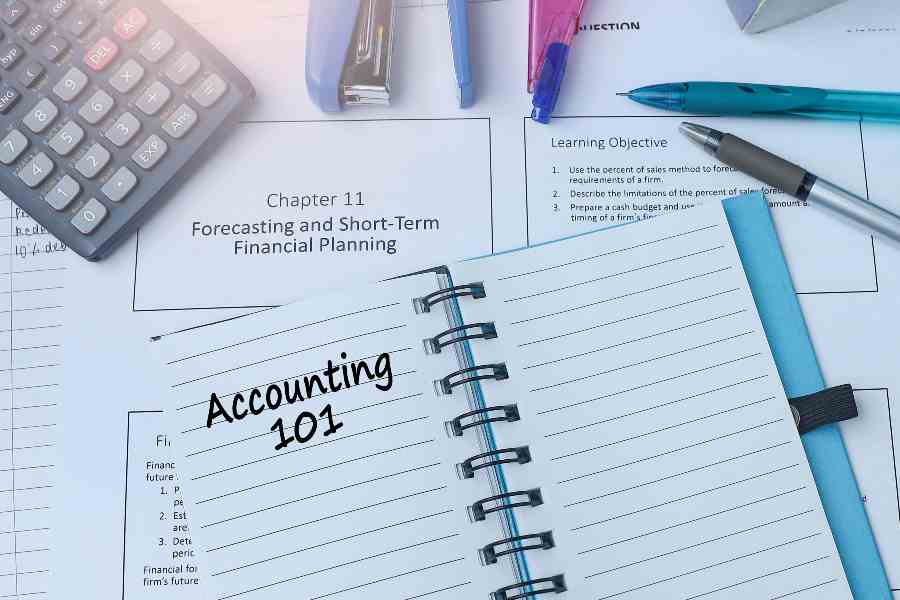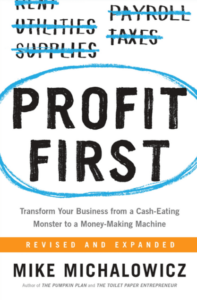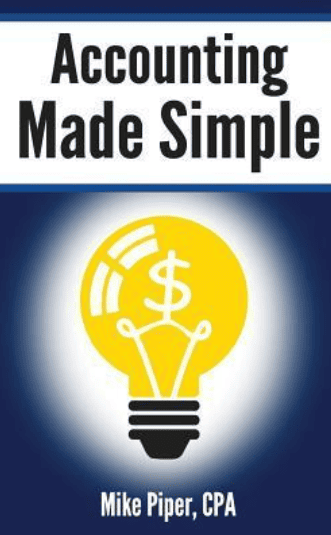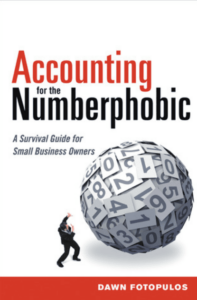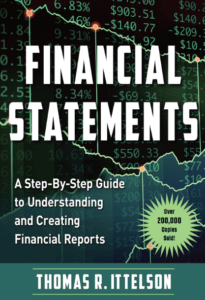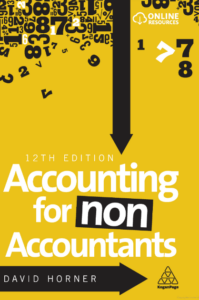While taking a crash course might be beneficial to small business owners who aren’t well-versed in accounting concepts, it often lacks the flexibility busy business owners need. To help, here are six small business accounting books that allow business owners to expand their knowledge at their own pace, providing valuable insights without the time constraints of a formal course.
- “The Accounting Game”: Best for beginners to understand how accounting works
- “Profit First”: Best for beginners to learn a simple budgeting technique
- “Accounting Made Simple”: Best for learning the formal accounting process
- “Accounting for the Numberphobic”: Best intermediate reading to learn how managers can use accounting numbers
- “Financial Statements”: Best deep dive into understanding formal financial statements
- “Accounting for Non-accountants”: Best deep dive into how managers should use accounting information
1. ‘The Accounting Game: Basic Accounting Fresh From the Lemonade Stand’
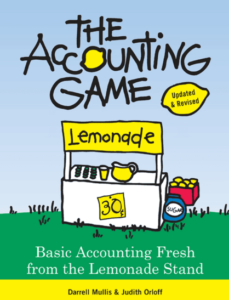 | Author: David Horner Publisher: Kogan Page Publication Date: May 3, 2020 Ratings at the time of writing:
Pricing on Amazon:
Level: Advanced |
“The Accounting Game” is an interesting small business accounting book that talks about basic accounting in a gamified manner. This approach simplifies accounting concepts and helps users understand complex concepts easily. The book uses real-life scenarios, which neophyte small business owners will love. The authors wrote the book in a conversational style. It feels like you’re just talking to a friend without all the jargon and technical concepts involved.
There are illustrations in the book, so you won’t get bored reading through walls of text. There are computations here and there—but they’re all simplified in how they’re presented. Overall, this book is good for new business owners looking to understand accounting without reading a college accounting book.
- Understanding the basics of accounting through an engaging, story-driven approach involving a lemonade stand.
- Interpreting financial statements, such as the income statement, balance sheet, and cash flow statement.
- Applying the accounting equation: Assets = Liabilities + Equity.
- Tracking revenue and expenses to see how they impact profitability.
- Differentiating between cash and accrual accounting and understanding their effects on financial reporting.
- Recording key transactions like sales, purchases, and payroll accurately.
- Managing depreciation and understanding its impact on the value of business assets over time.
- Handling liabilities, equity, and capital with practical, real-world examples.
Many readers expressed that they enjoyed the book for its easy-to-understand format, colorful graphics, and interactive exercises that help reinforce accounting concepts. The Q&A sections at the end of each chapter were particularly appreciated for aiding comprehension. Some found the book engaging and fun, recommending it to business owners and others looking for a simple introduction to accounting.
On the flip side, others felt that the tone was overly patronizing, particularly with the child-like language and repetitive praise. A few were frustrated with the book’s lack of depth on more advanced topics like journal entries and trial balances, and some found the repeated use of graphics excessive.
2. ‘Profit First: Transform Your Business From a Cash-eating Monster to a Money-making Machine’
Author: Mike Michalowicz Publisher: Portfolio Publication Date: January 18, 2017 Ratings at the time of writing:
Pricing on Amazon:
Level: Beginner |
“Profit First” is a book that teaches small business owners a unique strategy for business management, specifically budgeting—it’s not exactly one that goes over accounting concepts. It focuses on teaching business owners how to streamline operations, which contributes to the company’s overall bottom line. If you’re looking for a thought piece, this book is perfect for you. It introduces a business strategy that can help your small business accounting.
- Allocating a percentage of your revenue to profit first using a cash management system.
- Setting up separate bank accounts for profit, taxes, operating expenses, and owner’s compensation.
- Transferring money regularly into your profit account and treating it as a nonnegotiable expense.
- Controlling business expenses by managing what’s left after allocating profit.
- Shifting your focus from revenue to profit to create a sustainable, profitable business.
- Implementing the Profit First system by setting target percentages for financial categories.
- Reducing debt, managing cash flow, and scaling your business while maintaining profitability.
- Experiencing the psychological benefits of paying yourself first and preventing cash flow issues.
Readers generally appreciate the book’s core concept of flipping the traditional accounting formula to prioritize profit. Many found the system simple and practical, especially small business owners looking for better financial management. The idea of setting up separate bank accounts and allocating profit first resonated with many—and they saw improvements in their business’s financial health. The book is also praised for its actionable steps, easy-to-understand style, and use of humor.
However, some found the writing style unappealing, with complaints about unnecessary humor and language. A few reviewers shared that the book was repetitive, with later chapters adding little value compared with the strong opening. While some appreciated the hands-on approach, others criticized the lack of depth and case studies, feeling that much of the content was filler.
3. ‘Accounting Made Simple’
Author: Mike Piper, CPA Publisher: Simple Subjects, LLC Publication Date: March 1, 2008 Ratings at the time of writing:
Pricing on Amazon:
Level: Beginner to Intermediate |
This book is another good read for small business owners looking to strengthen their accounting knowledge. “Accounting Made Simple” highlights essential topics in financial reporting that’ll help small business owners understand the formal accounting process and preparation of financial statements. I like how the author explains the concept in a simple yet academic manner; it’s not a dumbed-down discussion.
This book is best for those who already have knowledge in accounting. You can still read this book as a beginner—but don’t expect it to be overly simple. This is a must-read for business owners wanting to understand accounting at a more profound level.
- Understanding the accounting equation and how it forms the basis of all financial statements.
- Reading and interpreting financial statements like the balance sheet, income statement, and cash flow statement.
- Applying basic accounting principles, including accrual vs. cash basis accounting.
- Calculating key financial metrics, such as assets, liabilities, equity, revenue, and expenses.
- Recording debits and credits in accounting transactions.
- Preparing journal entries and trial balances.
- Managing concepts like depreciation and inventory and understanding their impact on financial reporting.
This small business accounting book is commended for simplifying complex accounting concepts into clear, easy-to-understand language. It is concise and effective at breaking down difficult topics, making it a great starting point for beginners.
Some reviewers, on the flip side, pointed out issues with the sample problems, particularly unclear instructions for certain calculations, such as classifying liabilities. Others felt the book lacks depth, only covering basic concepts, and might not be useful for students needing more comprehensive content. The large font size also gave some the impression that the book could be shorter.
4. ‘Accounting for the Numberphobic: A Survival Guide for Small Business Owners’
Author: Dawn Fotopulos Publisher: AMACOM Publication Date: September 3, 2014 Ratings at the time of writing:
Pricing on Amazon:
Level: Intermediate |
“Accounting for the Numberphobic” is a book that goes a bit beyond basic accounting. This is a good book for managers wanting to grasp accounting concepts crucial for decision-making and analysis. It includes break-even point analysis in the discussion, which helps manage revenues and expenses. It covers more ground area in terms of accounting expertise as it shares tips on how external parties like bankers use the balance sheet.
I like the book because it gives intermediate readers more insights into accounting. If you’re an intermediate reader, you’ll definitely learn more accounting tricks. For advanced readers, it’s a good refresher just in case you’ve forgotten the nitty-gritty concepts.
- Reading and interpreting the income statement, balance sheet, and cash flow statement to evaluate your business’s financial health.
- Calculating key financial metrics like gross profit margin, net profit margin, and operating profit margin.
- Identifying the break-even point to determine when your business starts making a profit.
- Managing cash flow effectively to ensure sufficient funds for covering expenses.
- Using ratios such as the current ratio and debt-to-equity ratio to assess liquidity and financial stability.
- Spotting and avoiding common financial mistakes that many small business owners encounter.
- Leveraging financial data to make smarter business decisions regarding pricing, cost control, and growth planning.
Readers praised the book for simplifying accounting basics and making the discussions accessible for small business owners and freelancers. It’s highly recommended as a practical reference guide, helping readers understand key financial statements—like the income statement, cash flow statement, and balance sheet. It empowers business owners to take control of their finances with clear, actionable advice and humor.
While it’s great for intermediate readers, some noted it doesn’t cover complex details or provide references for some claims. Overall, it’s a valuable resource for understanding the essentials without overwhelming the reader.
5. ‘Financial Statements: A Step-by-Step Guide to Understanding and Creating Financial Reports’
Author: Thomas R. Ittelson Publisher: Sourcebooks Publication Date: March 1, 2008 Ratings at the time of writing:
Pricing on Amazon:
Level: Intermediate to Advanced |
This book focuses on financial statements rather than accounting in general. If you want to build expertise in reading financial statements as a non-accountant, I highly recommend this book, which is better suited for business owners wanting to learn how to use financial statements and how the different line items relate to each other. It doesn’t teach you how to make financial statements, unfortunately.
I like this book because it gives more depth to financial statement analysis. It is ideal for readers with intermediate to advanced accounting knowledge, preferably those who took accounting courses in college. It can enhance your appreciation and understanding of the financial statements and will teach you how to read financial statements, which will help you gain valuable insights during business decision-making.
- Breaking down the income statement to analyze revenues, costs, and net income.
- Understanding the structure of the balance sheet to classify assets, liabilities, and equity.
- Identifying cash inflows and outflows through the cash flow statement to manage liquidity.
- Calculating key financial ratios like current ratio, debt-to-equity ratio, and return on assets.
- Exploring the time value of money and applying it to financial decision-making.
- Understanding and calculating net present value (NPV) for evaluating investment opportunities.
- Analyzing capital budgeting techniques to make informed long-term investment decisions.
- Differentiating between operating, investing, and financing activities within cash flow.
- Applying basic accounting principles in creating financial reports for small businesses.
Reviewers placed emphasis on the book’s simplicity and accessibility, making it a great resource for beginners or nonfinancial individuals looking to understand financial statements. Readers appreciate the clear explanations and easy-to-follow examples, which help break down complex accounting concepts.
On the downside, some pointed out significant typographical errors, particularly in the cash flow statement calculations, which affected the book’s credibility for a few readers. While it’s useful as an introductory guide, those seeking more in-depth or advanced analysis might find it lacking and better suited for entry-level learners. Despite the errors, many still found it helpful for gaining a basic understanding of financial statements.
6. ‘Accounting for Non-accountants’
Author: David Horner Publisher: Kogan Page Publication Date: May 3, 2020 Ratings at the time of writing:
Pricing on Amazon:
Level: Advanced |
Accounting for Non-accountants is a book that expands discussion to topics like marginal costing, standard costing, and budgeting. I like it because it gives business owners a mini-accounting course that covers topics in financial and managerial accounting. Non-accounting professionals can also use it to expand their knowledge in accounting, especially if they only have a basic foundation in accounting.
Unfortunately, this book is only for advanced readers. If you have no foundational knowledge in accounting, I don’t recommend starting with it. It’s best to gain basic accounting knowledge first before jumping into more advanced concepts.
- Analyzing key financial ratios like profitability, liquidity, and solvency ratios to evaluate business performance.
- Managing cash flow effectively by tracking and forecasting cash inflows and outflows.
- Applying accrual vs. cash basis accounting to determine the best method for financial reporting.
- Understanding payroll accounting, including tax obligations and compliance.
- Conducting marginal costing, standard costing, and business costing to assist in pricing and cost control.
- Performing capital investment appraisal to evaluate long-term investment decisions.
- Learning basic principles of cost accounting for budgeting and financial planning.
- Gaining an introduction to limited companies and their unique accounting practices.
Reviewers said that they appreciate its clear and accessible approach to accounting and bookkeeping, making the book useful for new business owners, business students, and professionals needing an updated resource. It is seen as a helpful guide for understanding essential accounting concepts and staying current with changes in standards.
However, some readers found it too theoretical and difficult to follow, especially when it comes to practical application. Concepts like the double-entry system and balancing accounts were challenging for some, and the book didn’t provide the straightforward, ready-to-use guidance they were hoping for.
Frequently Asked Questions (FAQs)
Reading small business accounting books is crucial for business owners because it helps them understand financial statements, manage cash flow, and make informed business decisions. It also improves their ability to communicate with accountants and ensures the financial health of their business.
Accounting books for small business operations improve financial decision-making by teaching small business owners how to interpret financial statements, manage cash flow, and calculate key metrics. This knowledge leads to smarter decisions on investments, budgeting, and cost control—ultimately boosting profitability.
Yes, many accounting books are designed for beginners with no financial background. They simplify complex concepts and provide clear, practical examples, making it easy for anyone to learn the basics of accounting and build a strong foundation.
Small business owners should update their accounting knowledge at least once a year or whenever there are major changes in tax laws or financial regulations. Staying current ensures compliance and helps in making better financial decisions.
Bottom Line
Reading small business accounting books can help you better understand how accounting works in a business environment. And with your immersion in an actual business, you can see accounting concepts in action and help you make timely decisions based on information you can get from accounting information.

